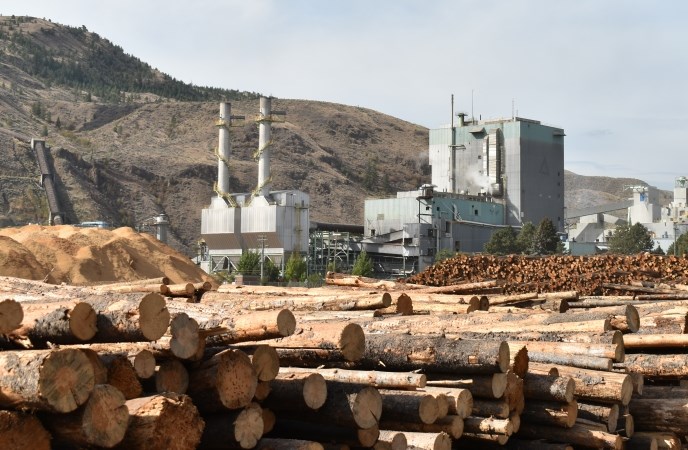
FILE PHOTO
(LEVI LANDRY / iNFOnews.ca)
October 16, 2023 - 6:00 AM
A pulp mill has been operating in the centre of Kamloops for almost six decades, and like all cities with pulp mills, the air can get a little bit odiferous.
Some residents have aired their grievances about the offensive smell on social media over the years, particularly those living in Kamloops’ North Shore that sits across the river from the pulp mill.
Resident Byron Steele has lived on the North Shore for decades.
“It always stinks when the wind blows just right, its coming from the settling ponds,” he said. “It’s the price we pay for jobs, we need local industry for the economy, unfortunately it’s the pulp mill. For the most part I just put up with the stench, it keeps Kamloops afloat, but yeah, it’s gross.”
The biggest factors to how smelly the air can be are wind and weather, and how they disperse odours. The odours are a byproduct of the pulping process and occurs when sulphur molecules combine with carbon and hydrogen molecules. Although unpleasant, the smell doesn’t pose a health risk.
“Those sulphur molecules come from sodium sulfide which is one of the chemicals used to separate the cellulose portion of wood from the non-cellulose portion,” said environment and technical manager at Kamloops Pulp Mill Kristin Dangelmaier in an email to iNFOnews.ca. “Once separated, the cellulose portion becomes pulp, whereas the non-cellulose is captured and used to produce steam and clean electricity.”
She said most mills in the province and across the country use the same process for making pulp, and odour levels are regulated by the provincial government to ensure protection of human health and the environment.
“It is important to point out that the odorous emissions, while sometimes unpleasant, pose no risk to health.” Dangelmaier said. “Our mill typically operates far below the discharge limits and the mill’s team continuously works towards eliminating as much as possible the intensity of odours emanating from our operations.”
READ MORE: Failed three-tower project comes back to Kelowna council with one tower
Danglemaier said from day to day there isn’t a lot of variation in the amount of odour coming from the mill. Once in a while there is an operational occurrence that causes a brief increase.
Odour levels from several sources are continuously measured at an ambient monitoring station in downtown Kamloops that is managed by the province and all air quality data is available in real time on the BC Air Quality website.
READ MORE: How BC's burnt forests feed the Kamloops mill
A decade ago the mill made some operational changes that reduced smelly emissions by roughly 80%. Since then the company hasn’t seen notable variations in complaints from the public.
Kruger Specialty Papers Holding L.P. purchased the pulp mill from Domtar in June, 2022, which bought it from Weyerhauser in 2007. The mill manufactures northern bleached softwood kraft pulp and unbleached softwood kraft pulp to supply some of its paper mills, and employs roughly 320 workers.
To contact a reporter for this story, email Shannon Ainslie or call 250-819-6089 or email the editor. You can also submit photos, videos or news tips to the newsroom and be entered to win a monthly prize draw.
We welcome your comments and opinions on our stories but play nice. We won't censor or delete comments unless they contain off-topic statements or links, unnecessary vulgarity, false facts, spam or obviously fake profiles. If you have any concerns about what you see in comments, email the editor in the link above. SUBSCRIBE to our awesome newsletter here.
News from © iNFOnews, 2023